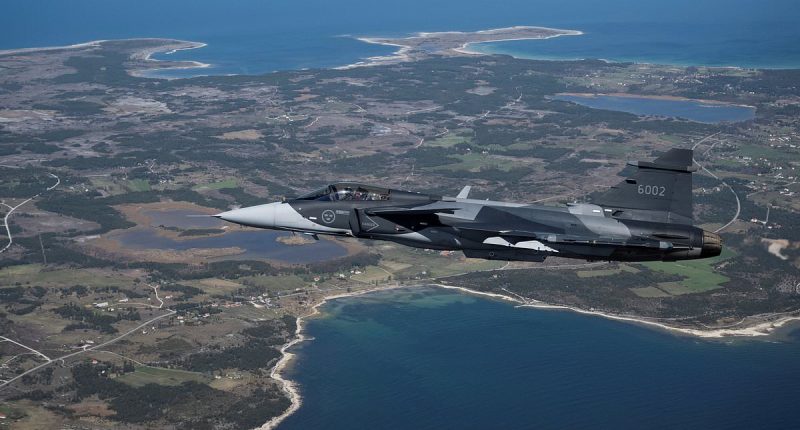Share this @internewscast.com

Europe is taking significant steps to prepare its military forces in light of a potential large-scale conflict with Moscow, particularly as the war between Russia and Ukraine has reached a new stage. This shift follows a significant maneuver by Kyiv’s security service.
On Sunday, Ukraine executed an extraordinary assault utilizing swarms of kamikaze drones launched from strategically positioned trucks, successfully destroying numerous military aircraft stationed at four different airbases throughout Russia.
This remarkable strike, dubbed ‘Operation Spiderweb’ by Ukraine’s SBU security agency and directly managed by President Volodymyr Zelensky, was so impactful that Russian military bloggers described it as ‘Russia’s Pearl Harbor’.
Now, as a furious Vladimir Putin plots his response, European leaders and defence chiefs are working to ensure their militaries can meet any threat from Moscow head-on.
Prime Minister Sir Keir Starmer today vowed to make the UK ‘battle-ready’ while committing to building 12 new nuclear-powered submarines and at least six new munitions factories as part of the government’s Strategic Defence Review.
Elsewhere, German Chancellor Friedrich Merz last week declared that Berlin will finance the production of long-range missiles in Ukraine, shortly after pushing a €500 billion defence and infrastructure spending bill through parliament.
But nowhere is this drive for remilitarisation more apparent than Sweden’s island of Gotland – a 1,000-square-mile tourist hotspot in the Baltic Sea undergoing a rapid transformation into a floating fortress and a key NATO military outpost.
On a visit to Gotland late last month, Sweden’s Chief of Defence Staff and Vice Supreme Commander Carl-Johan Edström told MailOnline about his vision for Gotland as a future NATO hub and first line of defence against Russian aggression.
He also warned that the transatlantic security alliance ‘cannot take its eyes off Russia for the next 15 years’ and said that Gotland must be ready to ‘take a hit’ from Moscow’s forces and keep fighting.
The importance of Gotland’s position is hard to overstate.
It sits just 120 miles from the Baltic states of Estonia, Latvia and Lithuania – all NATO members – and only 230 miles from Russia’s heavily militarised Kaliningrad exclave.
With Sweden now part of the transatlantic security alliance, Gotland offers allied nations an ideal base from which to surveil and deter Russian air and naval threats over the Baltic Sea, and – in wartime – provide air cover for NATO troops engaged in Europe while striking Russian-held positions.
But after a near-total demilitarisation of the island prior to the Russia-Ukraine war, Sweden’s military is in a race against time to reconstitute the island’s fighting force and build the infrastructure required to support a major conflict.
‘Gotland is such an important island and territory for the defence and deterrence of the whole area of responsibility for NATO,’ Lieutenant General Edström told MailOnline.
‘I see one big role as being the hub for NATO logistics from the West to the East.
‘The second role is to be a platform where you can project power to actually control the sea-level communications and also the airspace over the Baltic Sea to create our own A2/AD (anti-access and area denial) bubble.
‘And the third one, (Gotland) would be a perfect place also to build up offensive capabilities needed for deep strike, for example, to defend NATO allies (from a Russian attack)’.
Gotland’s strategic value as both a logistics hub and a launchpad for strikes against Russian military assets in the event of an attack on Europe is not lost on other Western defence chiefs.
German General Carsten Breuer said a huge increase in production by Russia’s military industrial base indicated that Moscow is preparing its stockpiles of weaponry and ammunition for a future clash with NATO, adding that Baltic states were at a particularly high risk of being attacked.
‘The Baltic States are really exposed to the Russians, right? And once you are there, you really feel this… in the talks we are having over there,’ he told the BBC.
He recounted that Estonian defence officials had used the analogy of being close to a wildfire where they ‘feel the heat, see the flames and smell the smoke’, but in Western Europe ‘you probably see a little bit of smoke over the horizon and not more’.
Last week, David Petraeus, a respected former US general and CIA chief, said Russia could launch an incursion into the Baltic state of Lithuania to test Western resolve, or as a precursor to a wider offensive.
From de-militarisation to re-militarisation
During the Cold War, Gotland was home to thousands of soldiers as Stockholm took precautions in the face of a potential Soviet attack, despite Sweden’s two-century-long policy of military neutrality.
Defence analysts termed the island Sweden’s ‘unsinkable aircraft carrier’, such was its strategic value. But in the post-Soviet era, with geopolitical tensions easing and defence budgets tightening, Stockholm began a gradual wind-down.
By 2005, the island was almost entirely demilitarised – its garrisons decommissioned, equipment sold off and personnel withdrawn, save for a skeletal presence of Home Guard troops.
Russia’s annexation of Crimea and the eruption of war in Eastern Ukraine came as a wake-up call for Swedish defence planners.
The idea of conventional war in Europe no longer seemed far-fetched, and Gotland – adrift in the Baltic Sea within striking distance of Kaliningrad – looked dangerously exposed.
In response, Stockholm performed an abrupt about-face. A 2015 defence bill called for a new mechanised battalion to be re-established on the island, and by 2018, the Gotland Regiment had been formally reactivated.
In 2020, the regiment assumed command over a scaled-down unit known as the 181st Armoured Battalion, and new conscripts began training on the island for the first time since the Cold War.
But Russia’s full-scale invasion of Ukraine in February 2022 sent the remilitarisation process into overdrive – and prompted Sweden to break with its long held policy of neutrality by applying to join NATO.
Now, a full brigade combat team is in development.
By 2027, Sweden wants the capacity to station around 4,500 troops on the island to not only oversee its air defence and reconnaissance operations, but to hold off invaders in the event of an attack.
Sweden’s Defence Forces spokesman Tomas Angshammer told MailOnline this force will include a mechanised battalion, an infantry battalion and a Home Guard battalion, backed by specialised units including signal, engineering, air defence, artillery and medical support.
An Explosive Ordnance Disposal (EOD) platoon and a combat logistics hub are also planned, ensuring that Gotland can both defend itself and receive and sustain reinforcements in the event of a conflict with full operational capacity by 2030.
To support this force, Sweden’s Fortification Agency has launched a sweeping infrastructure programme.
New barracks and a medical facility were completed last year along with a mess hall, exercise and maintenance areas to support permanent troops and the training of new conscripts, whose number is increasing year on year.
Maintenance facilities for tanks and armoured vehicles are almost complete, and construction has begun on a state-of-the-art logistics centre and agency office, set for completion next year.
These developments will enable Gotland to function not just as a standalone garrison, but as a fully fledged forward operating base capable of hosting allied forces and acting as a central hub for the defence of the Baltics and NATO’s Eastern flank.
Lt. Gen. Edström acknowledged that a huge amount of work remains before Gotland can field a fully operable fighting force while also hosting allied troops, but said the island’s regiment had been ‘doing a really great job’ in preparations thus far.
‘I really love this regiment because the infrastructure is brand new, but it takes time… It takes time to build a new infrastructure.
‘From that perspective, we have some constraints when it comes to how many soldiers we can take and host at one step,’ he said.
‘But I would say Gotland as an island has been used to host big international exercises for years – all the units that are working here are comfortable working together with allies already.’
Russian designs on Gotland
Moscow is well aware of Gotland’s strategic importance.
If the Kremlin were also to gain control of the island, it would leave Estonia, Latvia and Lithuania sandwiched between the Russian mainland to the East, Kaliningrad to the West and yet another strategic location to the North.
Not only would this isolate the Baltic States from the rest of their NATO allies, it would dramatically enhance Russia’s air and maritime capabilities in the Baltic Sea to threaten the Nordics and Western Europe.
A Russian annexation of Gotland would also allow Moscow to reinforce and provide air cover to its forces should Putin decide to launch an attack on the Suwalki Gap.
This 40-mile stretch of sparsely populated land along the borders of Poland and Lithuania has long been seen as one of NATO’s strategic vulnerabilities and the only thing preventing Moscow from connecting Kaliningrad with satellite state Belarus.
Prior to the launch of Gotland’s remilitarisation programme, Russia conducted a widely condemned military drill which saw two Tu-22M3 nuclear bombers, along with an escort of Su-27 fighter jets, perform dummy bombing manoeuvres that brought their wings within just 24 miles of the island.
Sweden’s accession to NATO last year prompted alarm bells to ring in Moscow, with officials and analysts warning that Russia’s forces could not allow a full remilitarisation of Gotland.
Russia’s Strategic Culture Foundation – a platform for defence and geopolitical analysis – last year claimed that Gotland would be the ‘number one target’ of Russian nuclear weapons in the event of a full-scale European war.
‘Experts from the Russian Analytical Center for Strategic Nuclear Forces indicate that at the very beginning of such a conflict, Russian armed forces would launch a nuclear strike on Sweden in order to prevent NATO cruise missile strikes on ships of the Baltic and Northern Fleets,’ the publication read.
‘It would be better for Sweden to remain a neutral country and for the island of Gotland to remain a tourist mecca than to become the number one target for Russian nuclear missiles.’
Russian military analyst and retired Navy Captain Vasily Dandykin also told Russian newswire Sputnik: ‘The size of this island makes it possible to put aviation, airfields, and naval bases… (to serve) the dream of both NATO bloc and the Americans to turn the Baltic Sea into a NATO sea. We understand what kind of threat this is.
‘In any case, more intensive [Russian] exercises will take place in the Baltic. We have to understand that Finland too is already a NATO member. Therefore, our actions will be adequate – both from Kaliningrad, where the Baltic Fleet is based, and from the rest of Russia.’
Lt. Gen. Edström told reporters in Gotland: ‘It’s very important to understand that, although Russia is engaged in special operations that were war against Ukraine, they see themselves in a long-term conflict with the West.
‘Even if the war in Ukraine – which I hope really soon will have a ceasefire or even a peace agreement – comes to an end, that doesn’t mean that Russia will change their mind, they will stay in conflict with the West.
‘That means that we can’t take our eyes off Russia, for the foreseeable 10 or 15 years to come.’
Sweden’s total defence concept
The rapid militarisation of Gotland is symptomatic of a wider push to prepare Sweden’s armed forces and civil society for war.
Prime Minister Ulf Kristersson said in January that Sweden was ‘not at war… but there is not peace either’, and urged Swedes to prepare themselves for every eventuality.
This effort, known as ‘Total Defence Duty’, is laid out in stark terms by the government.
‘From the year you turn 16 until the end of the year you turn 70, you are part of Sweden’s total defence and required to serve in the event of war or the threat of war,’ a statement on the Swedish government’s crisis information portal reads.
Lt. Gen. Edström told MailOnline that Sweden’s military is already working closely with various public sector agencies and private companies to provide training and instruction to civilians.
‘We are doing that all the time – that’s ongoing work. We have divided Sweden into four military regions, plus Gotland as a fifth. These regions are working very closely with civil agencies, authorities, entities, and companies to strengthen the total defence concept.
‘That means also sometimes to share plans between military and civilian units and do joint exercises. This is something we’re working on closely at the moment – these are active efforts with real training, cooperation plans, and integration.’
He later told reporters: ‘We are building a resilient island that can take a hit and continue to work on the civilian as well as on the military side.
‘That is our goal: to continue to grow the resilience of the Swedish society and the total defence concept, but also specifically for Gotland’s capability to take a hit and continue to work.’
As part of the total defence concept, the government has created the post of minister for civil defence to work alongside the armed forces minister, so civilians can be mobilised as well as the military.
In November, Sweden’s Civil Contingencies Agency (MSB) distributed five million pamphlets to residents urging them to prepare for the possibility of war.
The booklet named ‘If Crisis or War Comes’ contained information about how to prepare for emergencies such as war, natural disasters, cyber attacks and terrorism.
The government is investing in improving the emergency services’ capacity to operate during conflicts, strengthening cybersecurity and replenishing medicine stocks.
And the MSB said last month it had begun a huge project to modernise the nation’s nuclear shelters – a task it expected to take ‘two to three years’ – which includes efforts to upgrade filters which help protect occupants from chemical and radiological weapons.
With 64,000 bunkers sites spread across the country, Sweden already has more shelters than almost every other nation with space for around seven million people – more than two-thirds of its population.
The bunkers are designed to provide protection against shockwaves and bomb fragments, the blast and heatwaves from a nuclear weapon, radioactive fallout, gas from chemical weapons and biological weapons.





